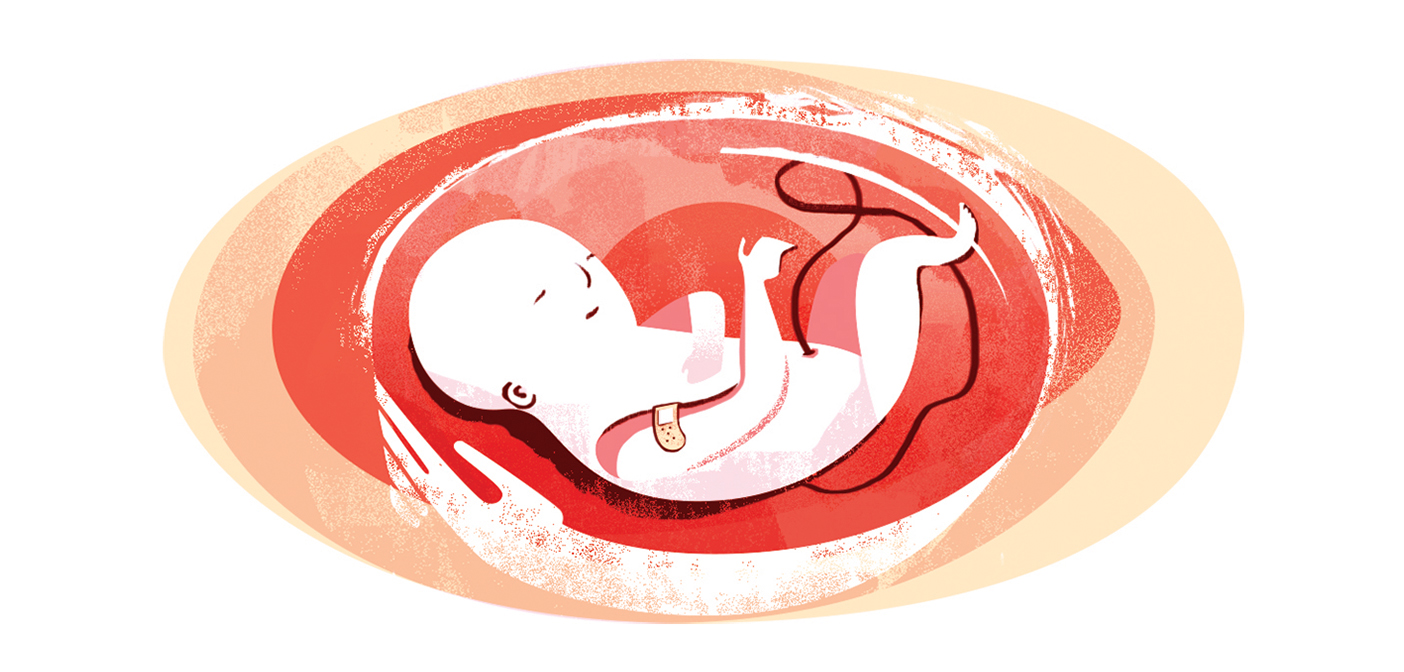Fetal therapy nurses smooth the way for ‘amazing’ surgeries
Fetal therapy nurse Jennifer Kearney helps save lives before they’re even born. She’s the first nurse at The Johns Hopkins Center for Fetal Therapy, which opened in July 2014 and is one of only 32 centers in the country. In the first year alone, Kearney saw nearly 200 patients come through its doors. The center manages complex fetal health problems and intervenes—through microscopic laser surgery—to correct life-threatening conditions.
“We can do interventions in utero, surgeries you never realized were possible,” said Kearney, RNC-OB. “I’ve seen it a hundred times or more, and it’s still amazing to me.”
Doctors conduct the surgeries, and Kearney ensures that everything goes smoothly. Sometimes a patient is evaluated in the morning and the intervention takes place the same afternoon, so Kearny is always on her toes. She coordinates equipment, surgery prep, electronic medical records, patient history and lab work. She also educates patients about what’s happening and often stays with them in the operating room.
“We’re invested in their care,” Kearney said. “Patients have said when they came here, they felt like they were the only patient in the hospital. It sums up how we make them feel, easing anxiety and getting them though the hardest thing that’s ever happened to them.”
She learned all she knows on the job because this specialty isn’t taught. Her background in fetal interventions and as a labor and delivery nurse helps her perform her job effectively.
Kearney remembers one surgery that came down to the wire. The baby needed a fetoscopic endotracheal balloon occlusion to treat a congenital diaphragmatic hernia. While this condition can be treated after birth, a small balloon inserted into the fetal trachea prenatally can improve lung development. It’s not an emergency situation, but it is time-sensitive—doctors must perform the surgery before 30 weeks’ gestation. Kearney had to act quickly because the equipment must be sent from Europe.
“We had to think outside the box to make it happen, like having equipment delivered to the center director’s house in the middle of the night to get it here in time for surgery,” Kearny said. “We made it in the nick of time.”
“It’s amazing that we can provide these treatments for a baby who wouldn’t have lived otherwise.”
— Jennifer Kearney, RNC-OBOther procedures mean life or death for the fetus. One example is twin-to-twin transfusion syndrome, in which the single placenta contains blood vessels that allow an unequal share of blood between the two fetuses. This causes one twin to have too little blood, and the other to have too much. Doctors at thefetal therapy center perform placental laser surgery to correct severe cases, and Kearney says they’ve had significantly higher success rates than the reported outcomes in randomized trials.
The fetal therapy team—two nurses, three physicians, three sonographers, a genetic counselor, a social worker and support staff—is always looking for new ways to provide better interventions and better outcomes.
“Although it’s tough when things don’t go well, it’s amazing that we can provide these treatments for a baby who wouldn’t have lived otherwise,” Kearney said. “I can’t even tell you how awesome this job is.”
Illustration by Nicolet Schenck

